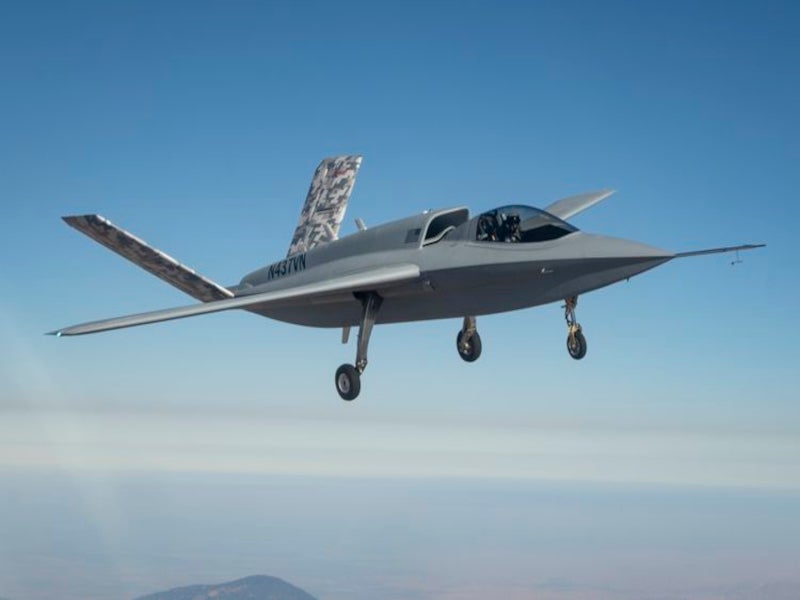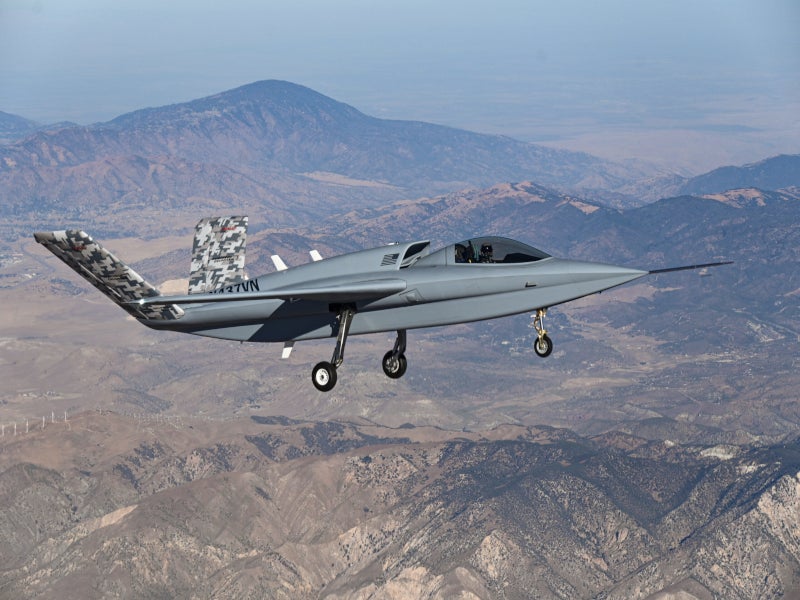The Model 437 Vanguard is an innovative stealthy aircraft concept, evolving from the Model 401 Sierra blueprint, developed by Scaled Composites, an aerospace company based in the US and subsidiary of Northrop Grumman.
The project aims to pioneer a versatile, cost-effective, and expendable aircraft solution. The concept has been under development since 2021 and it was originally designed as an advanced loyal wingman air combat drone.
As a manned iteration of the initial design, the Model 437 Vanguard benefits from Scaled Composites’ expertise in swiftly progressing from concept to experimental aircraft through design, fabrication, and testing phases.
The Model 437 Vanguard has been used to showcase the digitally-engineered wings produced by its parent entity.
The maiden flight of the aircraft was realised in August 2024, a mere 21 months post the commencement of its intricate design process.
The aircraft is anticipated to meet some of the US military’s advanced unmanned combat aircraft requirements, including the US Air Force’s Collaborative Air Combat programme.
Model 437 Vanguard development details
The development of the Model 437 Vanguard encompassed a fresh aircraft design including aerodynamic and structural evaluations, the crafting of the fuselage and tail assembly, assembly of the aircraft, integration of systems, and the orchestration of both ground and flight tests.
Northrop Grumman crafted and assembled the detachable wing sections by employing cutting-edge digital engineering resources, as part of its Digital Pathfinder project.
Utilising pioneering digital tools and manufacturing techniques, Northrop Grumman constructed the wings for the Model 437 technology demonstrator within a fully digitalised ecosystem.
This collaborative environment saw Northrop Grumman, alongside customers and suppliers, engage in the design, construction, and testing of the wings before the aircraft’s inaugural flight.
Model 437 Vanguard details
The Model 437 Vanguard features a wingspan and length of 41ft each, with a maximum take-off weight of 10,000lb. Following the completion of envelope expansion, the aircraft is expected to achieve a range of around 3,000nm and have an endurance of six hours.
Operated by a single pilot, the Model 437 Vanguard can transport up to 2,000lb of payload across various compartments, including an internal weapons bay capable of housing two AIM-120 missiles. The aircraft can ascend to a maximum altitude of 25,000ft.
Engine
The Model 437 Vanguard is powered by a single Pratt & Whitney 535 turbofan engine, delivering approximately 3,400lb of thrust.
The PW535 series is enhanced with an added compressor boost stage driven by the fan.
Digital Pathfinder project details
The Digital Pathfinder initiative has showcased the substantial benefits of a fully digital engineering ecosystem.
The approach has proven to reduce engineering revisions, expedite schedules, and diminish costs, thereby offering significant advantages for future aircraft programmes.
It has successfully reduced engineering modifications and redesigns to under 1%, a stark contrast to the 15% to 20% typically incurred with conventional methodologies.
The project has highlighted how precise digital models within this ecosystem act as a definitive reference, optimising testing and certification processes for forthcoming aircraft, resulting in considerable savings in both cost and time.
The initiative has also integrated high-fidelity models with robust and sanctioned model validation approaches, minimising the need for extensive ground and flight tests.
These models are poised to substantially lessen the efforts required to confirm airworthiness, presenting further opportunities for cost and schedule efficiencies.
Northrop Grumman’s high-integrity digital thread has interconnected engineers, customers, and stakeholders within a virtual space, enabling proactive identification and resolution of issues that commonly hinder acquisition programmes.
This foresight significantly enhances programme performance.
Moreover, the demonstration has employed advanced manufacturing techniques, such as the creation of a titanium structural bracket via plasma arc energy deposition. This pioneering application of additive manufacturing in the defence sector is considered a first.
Concurrently, the Digital Pathfinder project has implemented advanced methods to curtail the need for extensive tooling, thereby improving initial quality and reducing manufacturing revisions.





